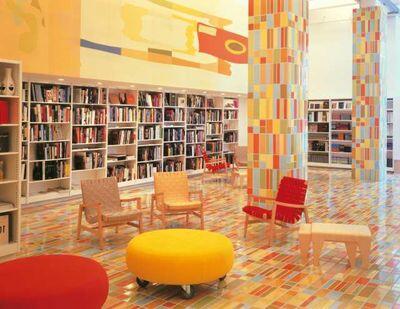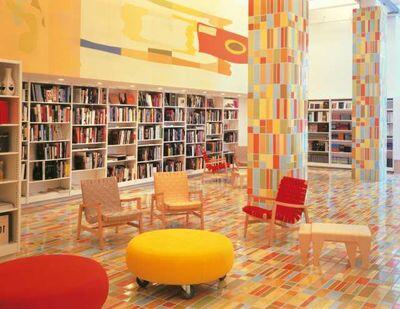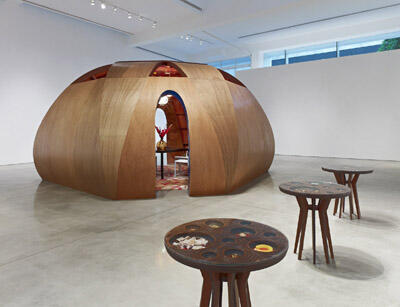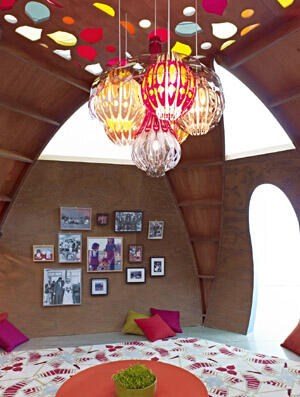Jorge Pardo Received the 2010 MacArthur Award
The Cuban American artist Jorge Pardo (Havana, 1963), who had a solo show at Gagosian Gallery Beverly Hills last summer, was chosen among the recipients of the prestigious fellowship MacArthur award, also nicknamed The Genius Award. The grant provides each honoree $500,000, divided evenly over five years. It is given to individuals who “show exceptional merit and promise for continued and enhanced creative work.”

Jorge Pardo –posted the page of MacArthur Fellowships- “is an artist whose visually seductive body of work explores the intersection of contemporary painting, design, sculpture, and architecture. Employing a broad palette of vibrant colors, eclectic patterns, and natural and industrial materials, Pardo’s works range from murals to home furnishings to collages to larger-than-life fabrications. He often transforms familiar objects into artworks with multiple meanings and purposes, such as a set of lamps displayed as both sources of illumination and as freestanding sculptures, or a sailboat exhibited as both a utilitarian, seaworthy vessel and as a striking obelisk. Working on small and monumental scales, Pardo also treats entire public spaces as vast canvases; for one project, he used dramatic, multicolored tile work to redesign the ground floor of the Dia Art Foundation in New York City”.
For other projects, he has challenged traditional curatorial presentation with installations that consciously ignore the constraints of conventional museum and gallery spaces. His construction and outfitting of a complete house for the Los Angeles County Museum of Art and a wooden jetty overlooking a lake for Skulptur Projekte Münster in Germany represent examples of his unique artistic approach. In reaching beyond defined aesthetic disciplines, Pardo is engaging viewers in the United States and abroad with works that produce great visual delight while questioning distinctions between fine art and design.
The critic Jori Finkel, from Los Angeles Times, wrote: “Pardo made his name in the art world in the 1990s by working the fine (or post-Duchamp, vigorously erased but ever visible) lines between art and design, and also craft and commodity. In 1998, he opened what would become his home, at 4166 Sea View Lane in Los Angeles, as a work of art (MOCA presented the “exhibition”), before settling in himself… And for years he has been making his signature hanging lamps for public spaces or the hideaways of wealthy art collectors”.
Finkel also remember that his work was early on grouped with Andrea Zittel, who also rethinks domestic spaces. But over the years she has in some ways grown more philosophical, and he more technological in emphasis. “Being an artist for Pardo means, among other things, being a fabricator. The last time I visited his studio he had a dozen employees running various work stations: It was part woodworking shop, part plastics manufacturer, and part graphic design outfit, complete with laser cutters and a wood router to turn computer images into three dimensions”.
Jorge Pardo received a B.F.A. (1988) from the Art Center College of Design in Pasadena, California. His paintings, sculptures, and installations have been exhibited at numerous national and international venues, including the Cooper-Hewitt National Design Museum, the Palais des Beaux Arts (Lille, France), the Irish Museum of Modern Art, and the Museum of Contemporary Art, Los Angeles.






